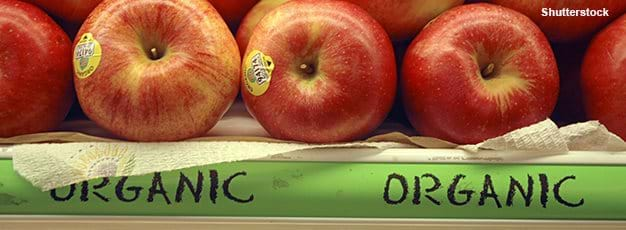Organic and Conventional Apple Orchards Differ in Pest Management But Share Other Attributes

Sales of U.S. organic produce are forecast to reach over $10 billion in 2011, according to industry estimates, capping over a decade of double-digit annual increases. Apples are among the top organic produce items, and U.S. apple growers and distributors have responded vigorously to the fast-growing demand for organically grown products. Certified organic apple acreage nearly doubled between 1997 and 2008 and accounted for about 6 percent of all U.S. land in apple production in 2008 (see chart under Farms, Firms. and Households on the Research Area Charts page). In addition, major apple exporters, including Canada, Chile, and Argentina, are now marketing organic as well as conventional apples within the United States.
In 2007, as part of its annual Agricultural Resource Management Survey (ARMS), USDA conducted the first comprehensive survey of the production and marketing practices used by organic and conventional apple growers. The survey results indicate that organic and conventional apple growers make many similar production and marketing decisions, including the predominance of dwarf and semi-dwarf trees, average tree density, and a focus on the fresh consumption market. Approximately 72 percent of conventional and 82 percent of organic apples were sold for fresh consumption in 2007, with the rest used to make juice, applesauce, pies, canned fruit, and other apple products.
Both organic and conventional producers used a variety of pest management practices to prevent, monitor, and suppress pests. ARMS data showed that conventional producers relied mostly on synthetic pesticides and chemical fertilizers for pest and nutrient management in 2007, while organic producers used biological pesticides, compost, and other materials that are on USDA's list of approved substances. Most synthetic materials are prohibited in organic farming.
Growers indicated a variety of reasons for choosing to farm organically in 2007, including prospects for increased farm income. Conventional apple yields were higher than organic yields in 2007. However, organic apples--whether for fresh consumption or processing--commanded substantial price premiums. Grower prices for organic apples were more than double conventional prices for fresh apples and nearly double conventional prices for processing apples.
Characteristics of Conventional and Organic Apple Production in the United States, by Edward Slattery, Michael Livingston, Catherine Greene, and Karen Klonsky, USDA, Economic Research Service, July 2011


